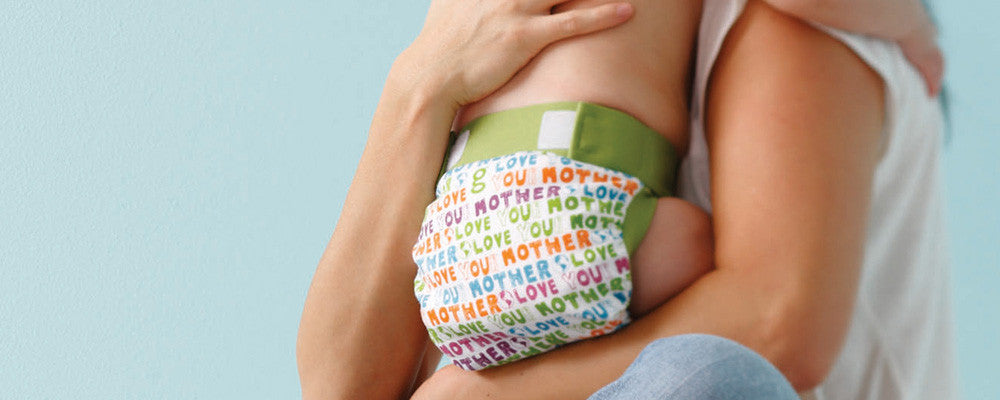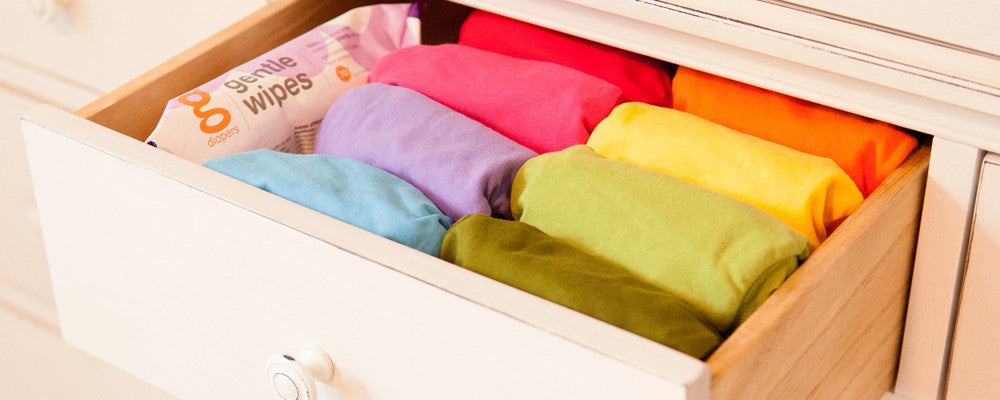Composting Diapers

gDiapers Disposable Inserts can be home composted (wet ones only) in a wide variety of home compost systems. The Disposable Inserts are made of cellulose, fluff pulp and super absorber, which alone would be a valuable contribution to your compost, but when combined with the added nitrogen from your baby’s urine, makes an incredibly rich soil amendment safe for all manner of plants and vegetables.
If you don’t yet have a home compost system but are keen to get started, here are some composting options to consider for composting diapers:
First, set up your compost system in a shady spot, near a water source if possible.
Types of Home Compost Systems
- Open-air composting - Use either holding bins or an uncontained pile to compost yard debris. You can make your own bins with wire mesh, old fencing, wooden pallets or wood and wire or buy them ready-made.
- Hot composting - This is a good option if your garden produces a lot of yard debris and you want to have high-quality compost quickly. Use a series of two or three bins made of wood, wire or masonry blocks. Hot piles require more diligent attention, but the compost you will produce is typically of a higher quality because the temperatures kill weed seeds and many plant diseases.
- Tumbler composting - This is a convenient way to get quick, pest-free compost, especially if you plan to throw in a lot of fruit and veggie scraps. Tumblers can be purchased ready-made.
Learn How to Compost Diapers
Once you have your compostable diapers system set up, all you need to do is begin adding compostable materials. These are made up of “greens” (nitrogen-rich materials) and “browns” (carbon-rich materials). Greens are often grass clippings, disease-free weeds, and vegetable/fruit scraps. Browns are often dried leaves, hay, sawdust, paper, and wood chips. Begin by throwing in a layer of dried leaves (“browns”), dampen them a bit with water. Then add some grass clippings (“greens”). Mix well so everything is evenly distributed and damp, but not soaked. You can add in some potting soil or compost starter to help get it started. Then you can begin to add your compostable items. Try to keep the ratio between your greens and browns even, or your compost pile may not cook as efficiently. Turn your compost every few weeks with a shovel or pitchfork, or by rotating your tumbler.

A Guide to Compost Materials: "Browns" vs. "Greens"
| Brown | Green | |
|---|---|---|
| What? | Carbon | Nitrogen |
| Provides? | Energy for Microbes | Protein for Microbes |
| Ratio | 2 parts | 1 part |
| Examples | Dried leaves, straw, hay, wood chips, shredded paper |
Fresh grass, kitchen scraps (no meat or bones), coffee grounds, gDiapers Disposable Inserts (wet ones only) |
Composting Wet Diaper Inserts
A wet Disposable Insert should break down in your home compost in 50-150 days depending on how hot your compost is. You can speed up the process by tearing open the insert, providing more surface area for bugs and enzymes to aid in the decomposition process. Many parents choose to keep a container specifically for compostable items, including their baby’s wet-only disposable inserts. Then the whole container can be emptied into the compost bin.
Anyone can have a home compost. There are small composters available for back porch composting if you live in an apartment or home without a yard. You can even compost in cold climates. Read this gDiapers On Location story of a family in Leadville, CO. They’ve home composted their disposable inserts for two babies now, and they live at a tricky climate of 10,000’ elevation!
Solid waste should always be flushed so that it can be safely treated. Please do not compost poopy Disposable Inserts. Please do not put gDiapers Disposable Inserts (or any diaper) in curbside/city compost bins.










